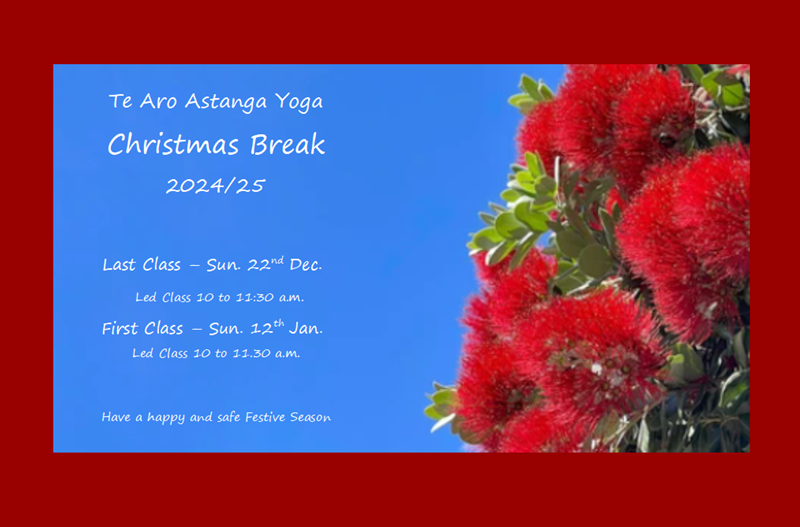I have written before about the “slowly, slowly, Ashtanga Yoga” method but want to emphasise it again in the light of a couple of recent examples I have had. We all know that the method is that you can comfortably do an asana in the Ashtanga sequence before you move on to the next one, and yet every teacher has a different interpretation of this simple rule of thumb. Here is my take on things, using recent experience.
This happened over 2 years ago now, but the effects are still playing out. I had a person come in who had an established practice. They got to supta kormasana and in the process of adjusting them I could tell that although they could get into the asana, they were having a strong emotional response to it. This confirmed to me what I was already feeling. This person was absolutely physically capable of the asana but was in an emotionally fragile place and would need to be nursed along very slowly and very gently. It is always a tricky one as a teacher to have someone who is long limbed and flexible and can therefore achieve the more challenging asana quite easily, but need to work on their strength or stamina, or who need to strengthen their nervous system. This practice can have a very powerful effect, on many, many levels, not just the physical.
This lovely student was with me for a few classes and then moved. The new studio they attended did not recognise what was happening. Within 6 months they were practicing well into the Intermediate Series. Now the intense backbending sequence of Intermediates can be very challenging for the nervous system and are absolutely not a good idea for some one who is already emotionally fragile. The result for this person was an emotional collapse that very nearly cost them their marriage and family. If it wasn’t for a lovely and understanding spouse, it would have.
The lack of empathy and understanding shown by the teacher in this instance was probably due to inexperience, but nonetheless, inexcusable. As a teacher of a strong practice like Ashtanga Vinyasa Yoga it is so important to be aware of and open to students’ emotional response. For me this comes mainly through my hands. This is why I don’t like to say too much while I am adjusting because then I can’t hear what my hands are learning and the student can’t hear what my hands are showing them. Talking to someone during an adjustment, other than to give gentle encouragement, only serves to distract the student from being in their body and listening carefully to what it is telling them.
The other incident also concerns a student who is long limbed and quite capable of binding in some of the more difficult asana in Primary Series. They started with me quite recently and very quickly became very enthusiastic about the practice. They went from not practicing at all to coming in 4 times a week. One day I was asked when I would start them on Bhujapidasana as they were getting Maricasana D comfortably. I replied that I was waiting for their knee to start hurting, and sure enough, they reported some pain in one of their knees.
In 25 years of teaching I have seen it time and again when someone goes from not practicing or practicing rarely to practicing daily or close to it then their body will react with pain. It won’t necessarily be in the knees but could be anywhere in the body. This is a crucial moment for the student and for the teacher. How the student responds to this first challenge in the body is going to show the teacher so much about how to progress from there. How the teacher responds is going to be vital to building the trust between them and the student that is an essential ingredient of teaching “Mysore Style”. The last thing either wants is for the student to be already loaded with the challenge of doing too many asana while dealing with this fiirst adjustment in their body. People will just walk away from the practice. However, if they have not been pushed along they have some energy to put into working out where the pain is coming from and what they need to do to in their practice or in their everyday lives to not get the pain.
This is such a big part of our practice. We are trying to re-educate our bodies, to use our bodies correctly and then to work through the blockages in our bodies that limit our movement. This will inevitably involve some discomfort and this must be managed with compassion and gentleness from both the student and the teacher. The results can be very damaging if this is not the case.
Take each new asana only when you are sure that you are coping with the practice you are doing on all levels. You will do far less damage by going “slowly, slowly” than by pushing yourself in to the next asana. Gentle persistance, patience and compassion are key.

We love you Mike, thanks for teaching us patience and steadiness. You rock
Great post Mike as always
Thank you for the thoughtful post Mike